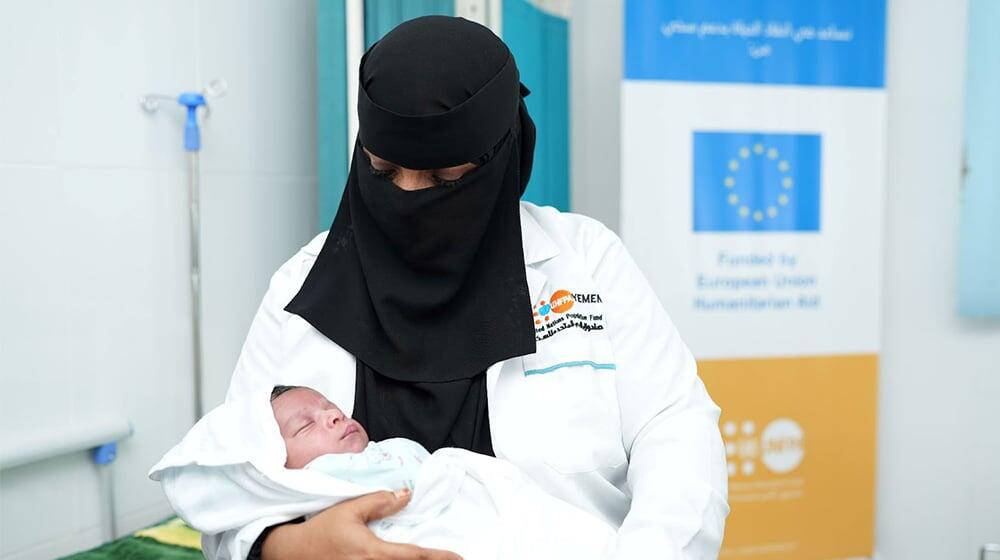HADRAMOUT, Yemen – When Mona began working as a midwife in her local health centre 30 years ago, she was the first in Yemen’s Hadramout Governorate.
“Back then, our area was a world away from health care,” she told UNFPA, the United Nations reproductive health agency. Now head of the midwifery department at the Shahir Health Centre in Hadramout, she explained hers was an impoverished community that lacked schools, medical facilities and health workers.
“Women faced pregnancy without proper care or follow-up. The traditional midwife, with all her goodwill, was limited in resources,” added Mona. “Many births ended in complications, sometimes tragically. The city hospital was out of reach due to cost, transportation and sheer lack of awareness.”
Fatima*, a patient at Mona’s health centre, confirmed this description of the past: “Survival hinged on pure luck, for both mother and child.”
Yemen has one of the highest maternal death rates in the world, and only one out of five functioning facilities currently offers maternal and newborn health services. Some 17.8 million people need health-care assistance in 2024, among whom an estimated 5.5 million women need reproductive health services.
Mona was inspired to change the situation and enrolled in a midwifery training programme in the nearby city of Mukalla after finishing school. When the Shahir health centre opened in her village, she was quick to apply. “Despite limited funding and barely enough staff, we fought tirelessly for the well-being of our women.”
As the backbone of community-based reproductive health services, midwives are a main gateway to health services in crisis settings, especially for the most marginalized.
The inequality of climate change
Mona recalled a harrowing day in 2015, when Cyclone Chapala hit Yemen just as war was erupting. Together with a team from her health centre, she said, “we travelled treacherous terrain on foot to reach people in desperation.”
Despite howling winds and with barely any lights, “the thought of three lives hanging in the balance – a woman in labour with twins – fuelled our resolve and we reached them in time.”
When climate catastrophes strike or conflict breaks out, midwives are most often the first responders, representing the single-most effective way to avoid preventable maternal deaths. Research shows the climate crisis carries specific threats for women and girls, as disasters can lead to pregnancy complications and increase risks such as premature births and miscarriages.
With funding from the European Union, UNFPA refurbished the Shahir health centre in 2021 with medicine and supplies, and supported training sessions for health workers. Maternal mortality rates in the area have since dropped, as dozens of trained midwives now offer a comprehensive range of services – from maternal health to obstetric care, assisted by an ambulance, fully equipped operating room and medicine provided free of charge.
“After the devastation of conflict and climate disasters, it felt like a dream,” said Mona. “Families in the region, displaced people fleeing war and floods, were able to find solace here.”
A case for investment
Since the start of 2024, UNFPA has reached over 350,000 people in Yemen with life-saving reproductive health care, protection and information, including support for over 100 health facilities.
Midwives are a critical part of this response, as providers of culturally sensitive care, as community leaders and as emergency responders. But the world is short of nearly one million midwives: A lack of international commitment to invest in their training, development and support limits their reach and endangers the women and girls who rely on them.
Like Mona, many midwives are forced to confront challenging work environments, low pay and a lack of career development – all factors driving the global shortage. Yet UNFPA research shows that increasing the coverage of midwives by 25 percent could save over 2 million lives annually by 2035.
Today, Mona is close to retiring, but she says she is relieved to be handing over the reins at her health centre. “They are a team of highly trained, professional midwives, equipped to navigate the future of maternal health care.”


